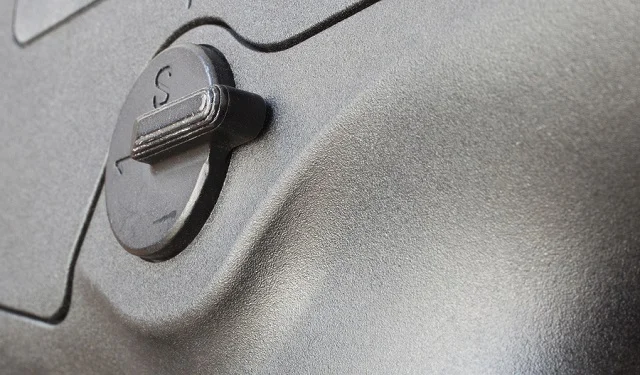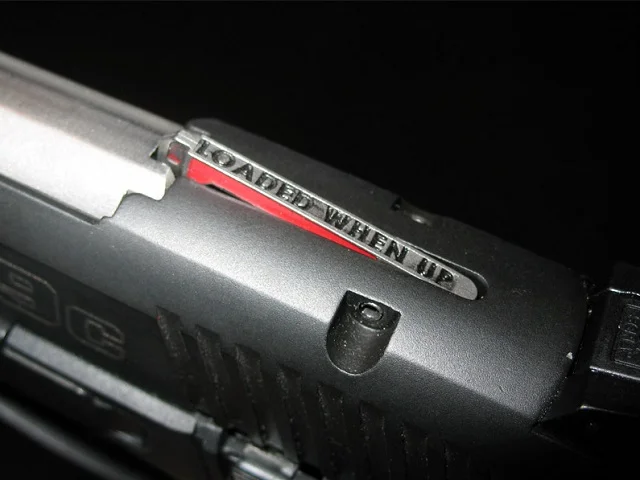
Can The Safety On A Gun Fail? It Absolutely Can
Can the safety on a gun fail? It absolutely can, which is why safe handling and carrying of a firearm is vitally important. Everything mechanical has a failure rate, so it behooves you to bear these things in mind.
There are a number of forms of mechanical safety devices on firearms, all of which are susceptible in some way to a failure and thus the potential of a mishap of some sort.
If you understand the nature of those safety devices, as well as their vulnerabilities, that can inform you of what you need to do in order to carry, handle and shoot guns safely. Remember, gun safety is all on you; it's your responsibility to be safe with them.
We'll briefly touch on how mechanical safety devices work, what can cause them to malfunction in various situations, and how you address them to stay safe.
Drop Safety: Hammer And/Or Firing Pin Blocks

One of the most common safety devices on a gun is the drop safety system. In all cases, it's a mechanical block that keeps the firing pin, hammer or striker/firing pin from impacting the primer of a chambered cartridge unless the trigger is pulled.
There are two dominant forms.
The oldest form is a transfer bar safety, which is installed on basically all modern revolvers except for reproductions of single-action revolvers from the 19th century such as those by Uberti, Pietta, and Colt.
A transfer bar is a tilting piece of metal hinged to the trigger. When the trigger is at rest, the transfer bar slides up into the hammer channel and blocks it from striking the firing pin or - in the case of revolvers without one - the cartridge itself.
The transfer bar safety only drops out of the way if the trigger is pulled.
Semi-auto pistols typically use a firing pin block, likewise mechanically linked to the trigger.
The typical design is a piece of metal - typically a cylinder - with a cutout. When at rest, the firing pin block acts as a wedge, preventing any travel of the firing pin block. When the trigger is pressed, the firing pin block is lifted, allowing the firing pin to travel and strike a cartridge.
There are some exceptions, however, such as the Walther PPK, but most modern production semi-autos use a lifting firing pin block.
Drop Safe? Only Up To A Point

Modern handguns are designed to be drop-safe, using the mechanical system above.
Another factor in the favor of safety is sheer physics and the firing pin itself.
For a pistol with a firing pin to discharge, the firing pin has to be struck with enough force to slam it into the primer of the cartridge in the chamber.
A dropped gun is that it hits the ground with enough force to do that, but the issue is how much of that force is absorbed by what part of the gun. In order for a discharge to happen, sufficient force has to be directed into the firing pin itself to cause it to slam forward.
However, this happens when the gun is dropped either directly onto the back of the slide, or the back of the slide at the correct angle.
Gun companies do their best to make sure their products are drop-safe. However, they can't anticipate every angle a pistol may fall at, the heights from which it may fall, material it might fall on, or all of the hundreds of variables in the equation.
The term here is "reasonable precautions," which is certainly what they take to ensure their products are drop safe...but that doesn't mean there aren't conditions under which a drop fire can happen.
Trigger Safeties: Striker-Fired Pistols And Their Workings

Striker-fired pistols all employ some sort of trigger safety system. Part of that system is a firing pin block, as discussed above. However, there is usually an additional system installed to render the trigger safe.
Every manufacturer's individual system has its own nuances, but they all basically work the same way. The quick version goes something like this:
The firing pin/striker is partially (or fully) cocked by rearward travel of the slide, but a firing pin stop (not the firing pin block, though that's part of this too!) catches the firing pin and locks it in place before it can return and strike the next primer.
The trigger is connected to a trigger bar, which is connected to a tilting link that releases the firing pin stop.
Now, the trigger safety devices are two- to three-fold.
At rest, the trigger itself is disconnected from the trigger bar, and the trigger link is out of position so it can't trip the striker. To connect the trigger, you have to begin pre-travel of the trigger and engaging the trigger safety tab, tilting the trigger into position and engaging the bar.
As the trigger bar moves backward, the link that trips the striker is moved into position to do so. Additionally, the trigger bar itself is connected to the firing pin block, which moves out of the way as the trigger is pressed.
So, that's three passive safety features (disconnected trigger, disconnected link, firing pin block) active at once. Are those features fail-safe?
The trigger system - not the firing pin system itself; see above for drop safety - is safe in theory, but less than you might think in practice.
Technically, the trigger tab has to be pressed to connect the trigger to the trigger bar and initiate a trigger press. Normally this requires a press of a finger...but the truth is that anything that can enter the trigger guard and put pressure on the trigger can do it.
Fabric and folded-over holster materials have all caused unintentional discharges with Glock and similar designs of pistol, so the system is not at all fool-proof.
What About A Manual Safety? Do They Fail?

Manual safety levers mechanically lock the gun in some fashion, either by disconnecting or blocking the trigger and/or locking the slide, so the gun cannot be fired unless the safety is deactivated and the trigger pressed.
This would seem to offer the greatest degree of safety, but there is, of course, a catch.
The first problem with mechanical safety devices is the nature of the device itself. Depending on how it's designed and/or made, a safety may be very easy to put on or off.
For instance, get a hold of a Smith and Wesson M&P with manual safeties sometime. Notice how easily the safety is activated or deactivated; it takes barely any effort at all. Then use the manual safety on a 1911 and notice it has some real resistance.
Not all manual safeties, therefore, are created equal.
Then we have the problem of carrying with a manual safety engaged.
When holstered, the pistol is in contact with holster material and/or your clothing and/or your body. It is not hard for the safety to be bumped off while up and about and walking around.
Ask the 1911 guys and they'll tell you it isn't easy to find a holster that's actually made for cocked-and-locked carry.
So, manual safeties can be bumped or switched off, depending on the safety itself or if the pistol is carried in a holster that isn't designed for carrying with a manual safety engaged.
Is it possible for a manual safety to be broken in the on or off position? Theoretically yes, but it is exceedingly rare.
DA/SA pistols based on the Walther system (a decocking safety) that have a Walther-style firing pin block have been known to induce a discharge when the decocking safety is engaged. However, it is A.) very, very rare, and B.) only happens to very old guns in poor condition.
Another possibility is that regarding internal trigger locks, which are installed on some revolvers. This practice was instituted in the Clinton administration as part of a concession to political pressure, which is why these devices are commonly referred to as "Hillary holes."
The frame of the firearm will have a small hexagonal hole, and the lock is actuated by a tiny hex or Allen key. Some makes and models have been known to activate the lock during shooting.
Okay, so we have a bit of an understanding that safety devices are fallible. What does one do about it?
Proper Gun Safety Practices And Prudent Holster Selection Go A Very Long Way

There's no great secret to gun safety; prudence and consistency go a very long way to preventing accidents. You make sound choices, and you take care to keep making them over time.
In the case of the fallibility of gun safety devices, it really all comes down to a few key principles.
Handle guns with care, respect, and always do so. Always assume a gun is loaded. Never assume a mechanical safety has your back. Rely on yourself and safe handling and operation of firearms.
A loaded gun should be in the holster, in your hands, or in the safe. Unless you are handling the weapon, it should be stored safely.
Holsters are safety equipment. They keep the gun secure and secured to you. Therefore, only use a holster with adequate retention.. If the holster can't retain the gun by simply putting the gun in the holster, it's worthless.
If you're going to carry a gun that has a manual safety, make sure the holster does not interact with the safety. The safety shouldn't be activated or deactivated by the holster when carrying.
A few other things should be mentioned.
When it comes to striker-fired pistols, the reality is that if they are handled carefully, and the owner takes care to ensure it is unloaded prior to takedown, and is careful when holstering and carrying the pistol, accidents won't happen.
If you make prudent holster selection, and if you handle firearms carefully, you won't ever have to worry about your gun being drop-safe. A gun that is safely handled, and safely carried, won't get dropped.
So yes, the safety on a gun can fail. However, if you do your job in handling and carrying guns safely...the safety on your gun will never be in a position where it will.








